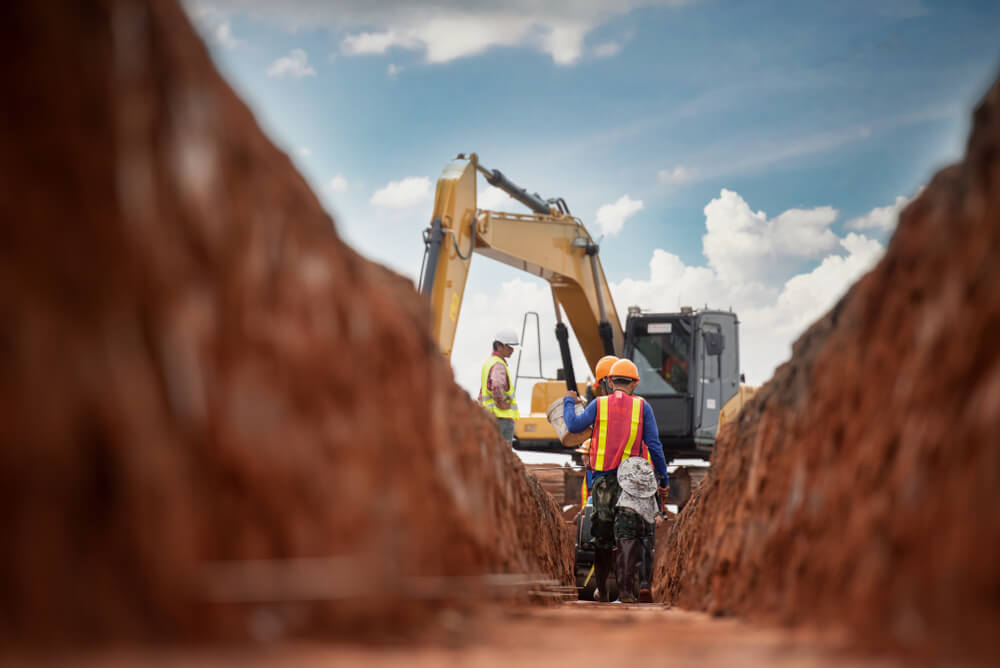
The 3 most common different types of drains
Did you know that there are different types of drains and each has its own uses and methods of transporting water, sewage and waste from one place to another? Whether this be domestically within your home or on a larger scale commercially for large factories or entire housing estates!
Drainage systems can be complicated and if you are not a qualified plumber or someone with know-how within the drainage industry, it can be incredibly confusing to understand all the different aspects of drains.
However, throughout this article, we will document three of the most common types of commercial and domestic drainage types so you can get a clearer understanding on the most common types of drainage systems.
This way if your drains are causing your problems and you require drainage repairs, you will be able to have a clearer understanding of the issues at hand when the professional plumbing contractor visits your home and looks to repair your specific type of drain.
Surface drainage system
A surface drainage system is one of the most common types of drains, it is designed to remove excess water from the surface of the ground through ditches or channels. Its main focus is to prevent the build-up of water and redirect it away from areas to promote proper drainage.
There are plenty of different types of surface drainage systems including some of the most common such as grading drainage which integrates a slope into the ground and facilitates the flow of water to the drain. In addition to this, surface channels are a common type of surface drain which uses open channels to collect water. They can be natural or man-made and lined with vegetation, plants and erosion-resistant materials. Other types of surface drainage systems include open drains, swales and catch basins.
Subsurface drainage system
A subsurface drainage system sometimes referred to as a French drain is a type of drain that is located beneath the soil. They are essentially drains that are buried underground and are designed to drain excess water from the soil.
They work at the root level where the pipes are built into a ditch that is dug into the ground. It involves a network of pipes and drains that are installed beneath the ground to collect and transport water away from the area. They are typically used in farm work such as agricultural fields, sports fields such as football and rugby pitches and golf courses.
This type of drainage system is great for the environment and is very eco-friendly. It is not only the best sort of drainage system for your soil but also helps plants and vegetation that are buried near the drain. They reduce the risk of plant and tree roots rotting if they are exposed to too much water and reduce the risk of bog and waterlogging on flat grass surfaces by removing the excess water from the ground and draining it away.
Gutters & downspouts
Gutters and downspouts are the first defence for any building that is looking to remove and displace excess water. Both gutters and downspouts work together in a system to drain water from your roof to the ground and drains below. Gutters line the edges of your roof and collect any water as it runs off the surface of your roof this then flows into the long downward-looking pipes called downspouts that let the water flow down the side of your home or building to the drains on the floor below.
Although downspouts and gutters can easily get clogged with debris such as leaves, sticks, twigs and other materials, they are the best way to protect your home from the natural elements. They are further necessary if you live in a location that is prone to extreme weather conditions, in particular, extreme storms.
Conclusion
Overall, you should now have a clear picture of the three most common types of drainage systems, therefore if you are struggling with any potential drainage issues and require professional intervention by a qualified drain repairs specialist, you now have a good idea of the issues at hand and how your drainage system works. This way when the plumbing professional is explaining the specific issues at hand, you will be able to have a clearer picture of the issue at hand.
Furthermore, if any recommendations to integrate a different type of drainage system into your property arise you will now be able to have a good idea of which system would be the best choice for your home.
James Anderson
Related posts
Stay connected
- How LoveOn Chat Is Becoming the Most Versatile AI Companion for Digital UsersThe internet keeps shifting toward hyper-personal interaction, and AI companions are at the center of this shift. What used to be simple chatbots are now evolving into emotionally aware, adaptive, and multi-functional digital partners. Among the new generation of platforms, LoveOn Chat is becoming one... The post How LoveOn Chat Is Becoming the Most Versatile […]
